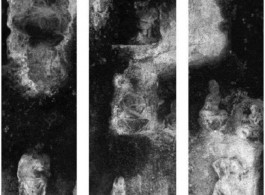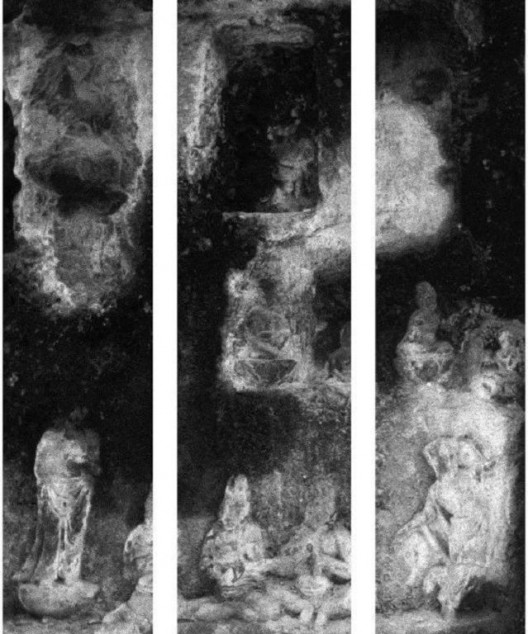INK studio
Beijing
OPENING NOVEMBER 18, 2017 (SATURDAY)
Group Discussion: 2pm
Public Opening: 4pm
Michael Cherney, Huang Zhiyang, Hung Fai, Hung Keung, Li Huasheng, Li Jin, Jennifer Wen Ma, Cindy Ng
Curator: Alan Yeung
November 18, 2017 – January 19, 2018
A painted rock bleeds as living flesh across sheets of paper. A quivering line gives form to the nuances of meditative experience. The veiled light of an icon radiates through the near-instantaneous marks by a pilgrim’s hand. The group exhibition Luminous Shadows explores spirituality and transcendence in the sensory engagement with the material world. Each of the eight participating artists calls attention to the embodied experience of space and time, recuperating dimensions of art repressed by a modern aesthetics of detached contemplation. The work of art is here ritualized anew as a vehicle for salvation and awakening, a self-conscious theatrical illusion, a sensuous body of pleasure and pain, and an object of pious devotion and yearning.
Organized as a series of shrine-like enclosures, Luminous Shadows is inspired by the cave as a primordial site of image-making and beholding. At once concrete and ethereal, the cave both heightens interiority and encourages dream-like wanderings into worlds beyond. It is the archetypal space of the Buddhist icon: Shakyamuni once miraculously imprinted his own “shadow image” in a cliff-side grotto. Radiant and reflective like a mirror from afar, this image would disappear into the blank rocky surface upon approach. Encompassing rubbing, wall painting, soundscape, and manipulations of perspective and light, the works in Luminous Shadows draw on the physical, sensorial, and conceptual ambiguities of the cave.
Hung Fai (b. 1988, Hong Kong) ritually enacts and dissolves the violence of patriarchal authority in his laborious stippling of a rock painted by his father. Li Jin (b. 1958, Tianjin) reproduces a Dunhuang mural depicting compassionate self-sacrifice, expressing his own piety through utmost faithfulness to its weathered surface and faded pigments. The pilgrim-painter Hung Keung (b. 1970, Kunming) captures his fleeting encounters with enshrined icons with ink-stained fingers. Here presented as an immersive installation, Michael Cherney’s (b. 1969, New York) photographs reconstruct auratic ruins of Buddhist grottos through the material artifacts of film and xuan paper.
In Jennifer Ma’s (b. 1970, Beijing) installation, light and glass repeatedly coalesce into an illusionary landscape before dissolving in a reflective ink pool. Cindy Ng’s (b. 1966, Macau) video presents a theater of liquid traces, inviting and frustrating the desire for narrative and character. A shamanistic connoisseur of archaic stone and jade artifacts, Huang Zhiyang (b. 1965, Taipei) channels in painting and sculpture their mystical energies. Inspired by the landscape and religiosity of Tibet, Li Huasheng’s (b. 1944, Yibin, Sichuan) vast hand-drawn grids and lines oscillate between surface and depth, the infinite and the infinitesimal.
Accompanied by video and material documentation of the artists’ processes, Luminous Shadows presses on the question of agency and medium at the heart of the Shadow Cave lore. Does the power of images derive from material constitution, spatial and ritual context, the object of representation, or the devotion of the maker or beholder? Or is it precisely the indeterminacy between them?




